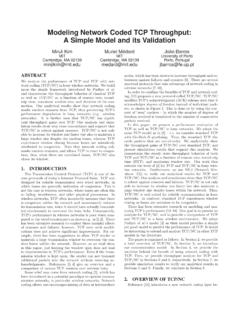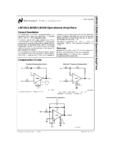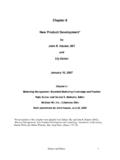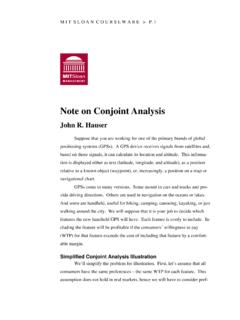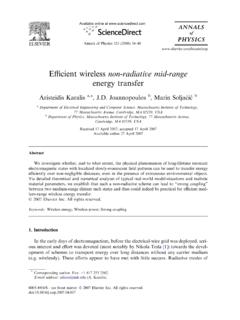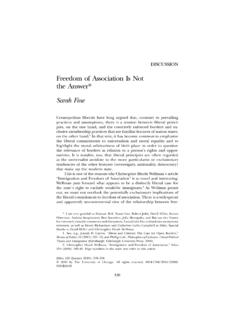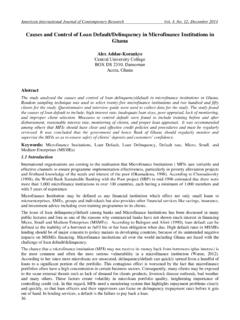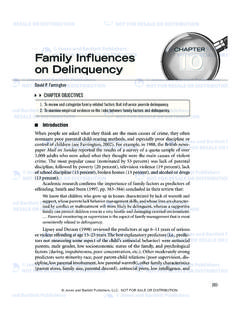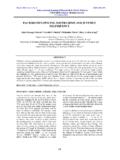Transcription of Birth Order and Delinquency: Evidence from …
1 Birth Order and delinquency : Evidence from Denmark and . Florida Sanni Breining Joseph Doyle David N. Figlio Krzysztof Karbownik . Je rey Roth k July 31, 2017. Abstract Birth Order has been found to have a surprisingly large in uence on educational attainment, yet much less is known about the role of Birth Order on delinquency outcomes such as disciplinary problems in school, juvenile delinquency , and adult crime: outcomes that carry signi cant neg- ative externalities. This paper uses particularly rich datasets from Denmark and the state of Florida to examine these outcomes and explore potential mechanisms. Despite large di erences in environments across the two areas, we nd remarkably consistent results: in families with two or more children, second-born boys are on the Order of 20 to 40 percent more likely to be disciplined in school and enter the criminal justice system compared to rst-born boys even when we compare siblings.
2 The data allow us to examine a range of potential mechanisms, and the Evidence rules out di erences in health at Birth and the quality of schools chosen for children. We do nd that parental time investment measured by time out of the labor force is higher for rst-borns at ages 2-4, suggesting that the arrival of a second-born child extends early-childhood parental investments for rst-borns.. We thank Paul Bingley, Dalton Conley, John Donohue, Jens Ludwig, Justin McCrary, Joe Price, and numerous seminar participants at the Danish Institute for Local and Regional Government Research, NBER Summer Institute Economics of Crime Workshop, CESifo Economics of Education Group Conference, University of Essex and University of Notre Dame.
3 We are grateful to the Florida Departments of Education and Health for providing the de-identi ed, matched data used in this analysis. Breining gratefully acknowledges nancial support from CIRRAU and Danish Council for Independent Research. Figlio appreciates funding from the Department of Education, the National Institutes of Health, and the Bill and Melinda Gates Foundation. The conclusions expressed in this paper are those of the authors and do not represent the positions of the Florida Departments of Education and Health or those of our funders.. Aarhus University . MIT, NBER and SFI.. Northwestern University and NBER.. Northwestern University k University of Florida 1 Introduction Economists and policy makers have long been interested in the production function for human capital, with increasing attention paid to the development of non-cognitive skills (Cunha et al.)
4 2010; Conti et al. 2016). delinquency is a welfare-relevant manifestation of lower-level acquisition of non-cognitive skills. At young ages, disruptive peers have been shown to signi cantly impair learning (Carrell and Hoekstra 2010; Carrell et al. 2016; Kristo ersen et al. 2014). At older ages, crime incurs direct harm on others and leads to signi cant investments to deter and punish criminal activity (Nagin 2013). A better understanding of the causes of crime would inform policies aimed at preventing delinquency in the rst place. The family environment plays a major role in the development of these non-cognitive skills and subsequent delinquency . Widom (1989) discusses a cycle of violence where delinquency among parents is passed on to children.
5 The sheer amount of time children spend with their family and the in uences each member has on one another imply that the family must have large e ects; however estimating e ects of parental investments and sibling in uences can be confounded by endogeneity concerns. This paper studies the e ects of family environment on child delinquency outcomes through the lens of the in uence of Birth Order across siblings. There is a long history of studying Birth Order in social psychology and economics (see, for example, Adler (1928), Behrman and Taubman (1986). or Sulloway (1996)). The main recent empirical contributions stem from work by Black, Devereux and Salvanes (BDS). Their 2005 study employed large datasets from Norway for outcomes measured from 1986-2000, and they nd large Birth Order e ects on child outcomes that appear to dominate those associated with family size.
6 Using between and within-family variation in Birth Order , later- born children achieve a lower level of educational attainment and have worse labor-market outcomes. They also nd a higher likelihood of teen births among women. Our work complements theirs by bringing to bear Evidence on important outcomes rarely explored in the literature with data from two very di erent settings. In particular, this paper o ers three main contributions. First, we provide some of the rst estimates of the e ects of Birth Order on delinquency behavior disciplinary actions and truancy at school, juvenile delinquency , and adult crime and imprisonment using large-scale datasets that facilitate sibling contrasts.
7 A second innovation is that we study these relationships in two very di erent environments: Denmark and the state of Florida. Using the same empirical framework, variation in results (or lack thereof ) across these environments provides insights into whether the e ects stem from particular institutions or are more general in their nature. Third, using especially rich register data in Denmark and linked administrative data in Florida, we are able to investi- gate potential mechanisms for such di erences. This information includes measures of infant and childhood health, parental investments, school quality and sibling composition. Across both of our locations, and across di erent estimation techniques, we nd that second-born boys are substantially more likely to exhibit delinquency problems compared to their older sibling.
8 In particular, involvement with the juvenile justice system is found to be on the Order of 30-40 percent 1. higher compared to the mean level of involvement among rst-born boys in both Denmark and Florida. Incarceration by age 21 is also found to be 40 percent higher in Denmark. These e ects are particularly strong among more severe violent crimes (36 percent). In Florida, similarly large e ects are found for suspensions in school (29 percent) but e ects on truancy are much more moderate and heterogeneous. We nd corroborative Evidence when we consider a sample of young adolescents in Denmark where we can measure behavioral problems directly in the form of hyperactivity and measures of conduct problems by age 12.
9 In terms of mechanisms, we can rule out large classes of explanations. These include worse health at Birth (second-born children appear healthier) or in childhood (second-born children have fewer disabilities), schooling decisions including the age of entry and the quality of schools chosen (second- born children attend no worse schools and are more likely to attend pre-kindergarten and daycare). as well as maternal employment (measured by maternity leave) in the rst year of life. We do nd that maternal employment and the use of daycare is higher for second-borns in years 2-4 compared to older siblings. While it is well known that rst-borns have undivided attention until the arrival of the second-born, these results show that the arrival of the second-born child has the potential to extend the early-childhood parental investment in the rst-born child the may compound the natural bifurcation of parental attention between rst- and second-born children.
10 We also consider test score outcomes in both Denmark and Florida, and nd that second-born boys score lower on reading and math assessments in Denmark, but only on reading tests in Florida, in comparison to their older siblings. This achievement gap may be a signal and a contributor the delinquency results that we nd later in life. The remainder of the paper is organized as follows. Section 2 provides a brief background on the previous literature with an emphasis on the areas where our results represent a contribution. Section 3 describes the data. Section 4 presents the empirical framework. Section 5 reports the main results, mechanisms heterogeneity and robustness checks. Section 6 concludes.
